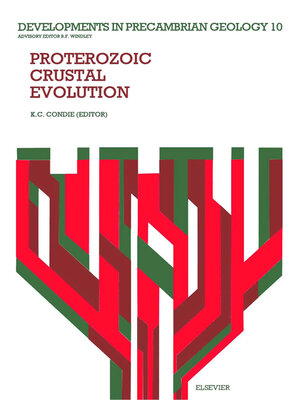
Sign up to save your library
With an OverDrive account, you can save your favorite libraries for at-a-glance information about availability. Find out more about OverDrive accounts.
Find this title in Libby, the library reading app by OverDrive.



Search for a digital library with this title
Title found at these libraries:
| Library Name | Distance |
|---|---|
| Loading... |
As a final product of the International Geological Correlation Program (IGCP) Project 217, this volume brings together significant advances in the understanding of Proterozoic crustal evolution. This IGCP Project focussed on nine research objectives: 1) Comparison of Archean and Proterozoic supracrustal assemblages to more fully understand differences between Archean and post-Archean tectonic regimes; 2) To more fully understand the geochemical differences between Archean and post-Archean sediments and to evaluate the various factors that control sediment composition; 3) From combined U/Pb zircon and whole-rock Sm/Nd studies, to see if the apparent 2.4-2.0 continental crust "generation gap" is real; 4) To employ new techniques in the dating of individual zircons to more fully understand Proterozoic tectonic history and the role of crustal reworking; 5) From trace element ratios and Nd isotopic data from basalts, to better understand Proterozoic mantle evolution; 6) To encourage more detailed studies of the anorogenic granite-anorthosite association to better understand its origin and significance in terms of crustal evolution; 7) From combined Nd, Pb, and Sr isotopic data, to more precisely estimate the amount of new continental crust formed during the Proterozoic; 8) To encourage joint P-T and geochronological studies of Proterozoic and high-grade terranes to better understand Proterozoic orogenesis: and 9) To try and understand why hydrothermal precious metal deposits are relatively rare in the Proterozoic compared to both the Archean and the Phanerozoic. The book should be of interest to professionals in the geosciences (especially geochemists, petrologists and structural geologists) and graduate students in the same fields.







